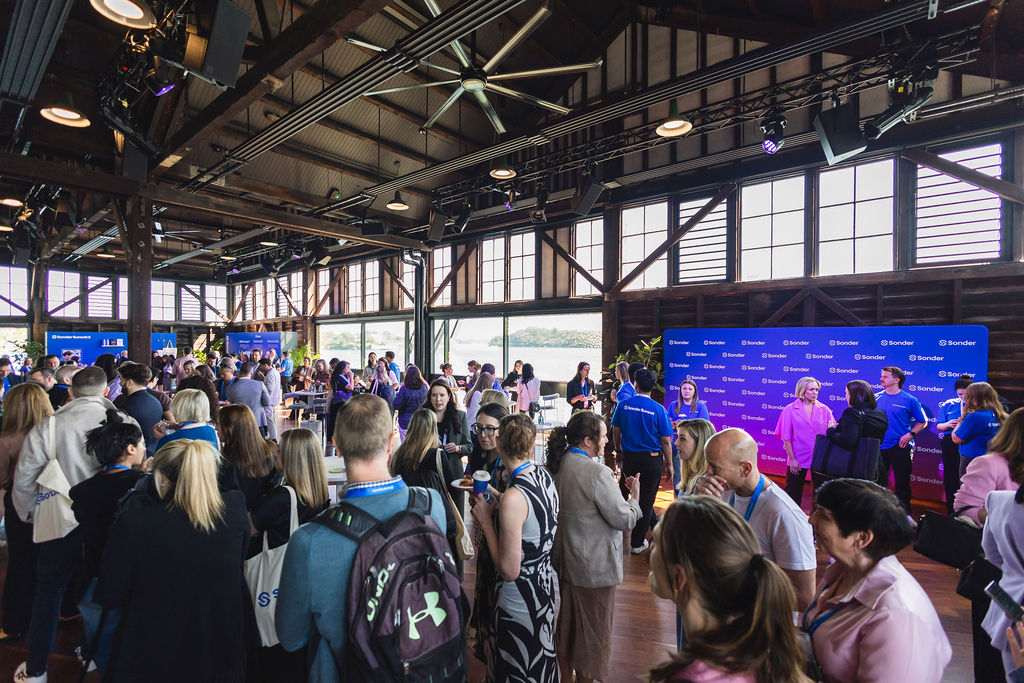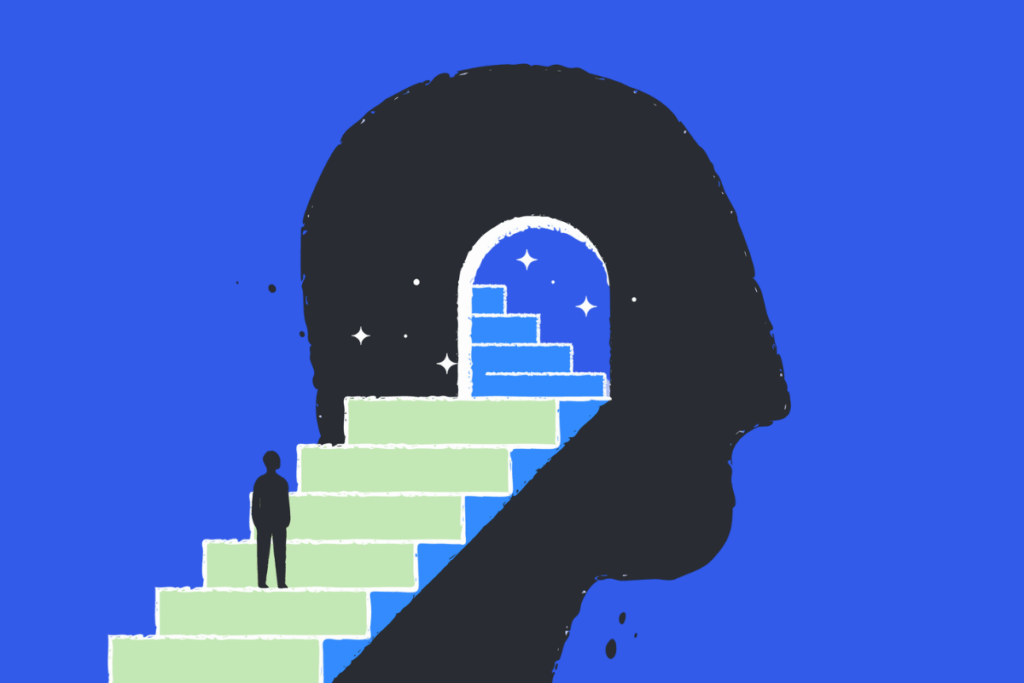As October arrives, workplaces across Australia are prompted to reflect on psychological health and safety. With Mental Health Month and National Safe Work Month running side by side, we’re reminded that genuine wellbeing and safety at work are ongoing, shared responsibilities—not just items to tick off a list or themes for a single month.
This year’s National Safe Work Month theme is “Safety: Every job, Every day”. At Sonder, we connect deeply with this message. In keeping with our purpose, we’d like to gently suggest expanding the conversation even further—considering “Safety: Every job, Every day, Every person”—as a way to honour the unique and valuable lives within every workplace.
Current circumstances highlight how urgent this conversation is. Pressures on Australia’s healthcare system continue to grow and, as the latest RACGP Health of the Nation 2025 report shows, mental health is now the most common reason people visit their GP. This shift places mental wellbeing at the forefront of public health, and positions your everyday efforts, whether as a leader, a team member, or a wellbeing champion, as vital to making a real difference.
Looking ahead, we want you to feel supported and equipped with the most relevant information. Our upcoming State of Employee Health & Wellbeing report, drawn on survey findings from over 2,500 Australians, offers a practical, human perspective on what’s helping and where opportunities remain.
Whatever your role, we’re committed to ensuring you have early access and feel equipped for what’s around the corner. In this article, we’ll share some early insights from our research, highlighting key trends and challenges in mental health.
How are Australian employees feeling overall?

If you’re feeling stretched thin at work lately, you’re certainly not alone. Our latest data shows that 92% of Australian employees have felt fatigued or low on energy in the past year, with more than four in ten experiencing this more than once a week. This persistent tiredness reveals just how common it is for people to be navigating high workloads and daily pressures in 2025.
Wellbeing isn’t just about physical energy. Seven in ten employees have also reported symptoms such as stress (45%), anxiety (32%), or depression (19%) over the last twelve months. Yet, seeking help remains a challenge for many. One in three have put off getting medical support, most often because of cost, lack of time, or wait times. And while employees are overwhelmingly aware of workplace support programs available to them, they’re not always turning to them for help. These barriers mean that difficulties can build up quietly, impacting both our health and how we show up at work.
How are Australians managing their mental health in 2025?

If you’re like the majority of people, you’re probably doing your best to stay proactive about your mental health, drawing on what works for you day-to-day. Most people lean on their own strategies rather than reaching for professional help. When we asked employees to list their top three ways of managing wellbeing, here’s what surfaced:
- Physical activity (46%): Keeping your body moving, through sport, a quick walk, or simply taking time outdoors, remains a strong foundation for wellbeing.
- Social connections (43%): Staying connected with family and friends really matters, especially when things get tough.
- Healthy habits (41%): Looking after your sleep and nutrition is something many of us prioritise.
However, only 16% said they’d access professional support, like therapy or Employee Assistance Programs (EAP). This highlights a clear gap between what support is available and what feels accessible or comfortable to use. If this resonates with you, you’re not alone.
What’s shaping workplace wellbeing?

The disconnect between symptoms and support
Perhaps you’ve noticed rising signs of stress or anxiety, and you’re not alone. Our research found that 70% of employees reported experiencing symptoms of poor mental health this past year, mainly stress (45%) and anxiety (32%) and depression (19%). Yet, 79% did not identify as having a mental health condition. Which suggests many Aussies are managing challenges on their own, without reaching out or potentially getting an appropriate diagnosis when needed.
Awareness doesn’t always equal action. While 78% of people know about workplace support, only 24% accessed it last year. This disconnect represents a missed opportunity for early support and connection.
Understanding the barriers to care
We know that wanting to support yourself or your team is different to being able to access care when it’s needed. The report highlights several reasons why people, even those aware of services, still hesitate to seek help.
Barriers to seeking medical support
- Minimising symptoms: Many (37%) felt their symptoms weren’t “serious enough” for a doctor’s visit.
- Long wait times: More than a third (30%) found the delays to get an appointment too discouraging.
- Scheduling pressures: Trying to balance work, family, and care leaves 35% unable to fit appointments in.
- Anxiety and cost: For some, worry about what a diagnosis might mean (30%) or the cost of care (49% – nearly half!) creates extra stress.
It’s clear that lived experience, convenience and affordability are significant hurdles. The good news is that these are all factors where individual, compassionate and proactive workplace support can make a real difference.
Barriers to workplace wellbeing support
Knowing that support is “available” doesn’t always translate to feeling able to reach out. Among people who knew about their employee assistance programs but hadn’t accessed them in the past year, these concerns stood out:
- No perceived need (60%): Many simply felt support wasn’t relevant to their situation at that time.
- Discomfort and stigma (16%): The act of asking for help can feel daunting.
- Lack of trust (12%): Ongoing doubts around usefulness and confidentiality are barriers for some.
- Confidentiality concerns (9%): Worry about privacy is real and deserves attention.
Understanding these reasons can help all of us—organisations and individuals—shape wellbeing initiatives that are genuinely trusted and inclusive.
Misalignment in wellbeing experiences between leadership and the workforce
We’ve seen a real split in how workplace wellbeing is viewed. Senior executives are often more confident in their organisation’s support, but middle managers and frontline staff report higher anxiety (42% compared to 25% for executives) and are much less likely to use available wellbeing services (13% compared to 38% of senior leaders). As a leader, this is an opportunity to reflect on how your views align with those of your team and if additional awareness or training for workplace support is needed.
Psychosocial hazards are now a primary WHS risk
Supporting psychological health and safety is now central to every organisation’s work health and safety obligations. The human and financial impacts are significant: Beyond Blue estimates the cost of mental ill-health at billions each year, and the average psychological injury claim is nearly four times as costly as a physical injury.
Investing in mentally healthy workplaces just makes sense, with an estimated every dollar spent returning $2.30 in value.
There’s been a rapid uplift in psychological injury claims, often linked to high job demands, unclear roles, low support, and bullying. The best outcomes come when we address these risks early, together, so everyone is safer and feels more supported.
Sonder Summit 2025: How leaders can build healthier and more resilient organisations

Mental health at work in 2025 is complex, and a lot of people leaders are juggling a lot of expectations at once. We recently held our inaugural annual conference, Sonder Summit, Bringing leaders together to reimagine how we support health, safety and wellbeing.
During the day, our expert speakers and guests shared lots of insightful and practical ways they were managing wellbeing and mental health. What were five key takeaways that you can consider as part of your strategy?
- Proactive, human-centred care
- Move beyond compliance by focusing on early intervention and personalised support.
- Use tools like wellbeing apps, pulse surveys, and alternative EAPs to identify and address stress before it escalates.
- Culture as the foundation for performance
- Regularly assess workplace culture through “culture audits” to understand what behaviours are celebrated or ignored.
- Set clear expectations, provide consistent feedback, and address toxic behaviours to create a healthy, high-performing environment.
- Empathy and self-mastery as essential leadership skills
- Invest in emotional intelligence and self-reflection training for leaders.
- Use models like CLEAR (compassionate, listening, empathetic, accepting, real) to build trust and connection.
- Human-AI partnership for meaningful work
- Automate repetitive tasks with AI to free up time for creative and impactful work.
- Ensure AI integration enhances human connection and doesn’t just drive productivity.
- Empowerment over control
- Shift from micromanagement to empowering teams with autonomy and resources.
- Encourage team-led problem-solving and decision-making to build trust and ownership.
You can read more about the event and watch key sessions here.
Rethinking your support model for 2026
Traditional EAPs often don’t meet people where they are. People tell us they want options that feel safe, accessible, and genuinely useful. And they want those options available at any time, for every need. Integrated care that brings together mental, physical, and practical support is no longer just “nice to have”, it’s essential.
Here’s what employees say they need most:
- 24/7 support: Nearly 60% rate round-the-clock mental health care as vital, with similar expectations for instantly accessible medical support.
- Real, practical help: About 70% value discounted or subsidised access for GP visits, dental needs, or health insurance costs.
- Family and crisis support: More than half value services that include their loved ones, and two-thirds want immediate help in a crisis.
The data shows that employees want individual, flexible and holistic wellbeing support. Meeting people wherever they are in their wellbeing journey will be critical moving into 2026 and beyond.
Download our EAP provider checklist.

How Sonder can help you lead the way
Being a leader in wellbeing is about being able to adapt, connect, and respond compassionately to the changing needs of your people. With insights from our State of Employee Health & Wellbeing report and the Sonder Summit, we’re in this together—mapping a future that’s both practical and person-centred.
As 2026 approaches, our commitment is to back you up with tools, support, and guidance that empower you and your team to flourish. Here’s how we can help your people:
- Immediate, confidential access to experienced support through clinical triage, a stepped care model, including nurses, psychologists, and safety experts when needed.
- One platform for integrated care: mental, medical, and safety support all in one easy-to-use mobile app.
- Family coverage, because care goes beyond the workplace.
- Critical incident support for those rare, but critical events.
Together, we can move beyond outdated models of support and build a culture of care that genuinely looks after your people in 2026 and beyond.



